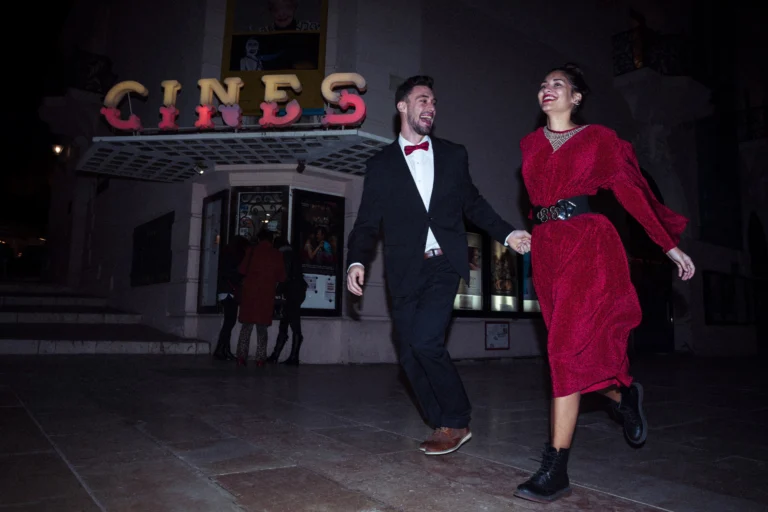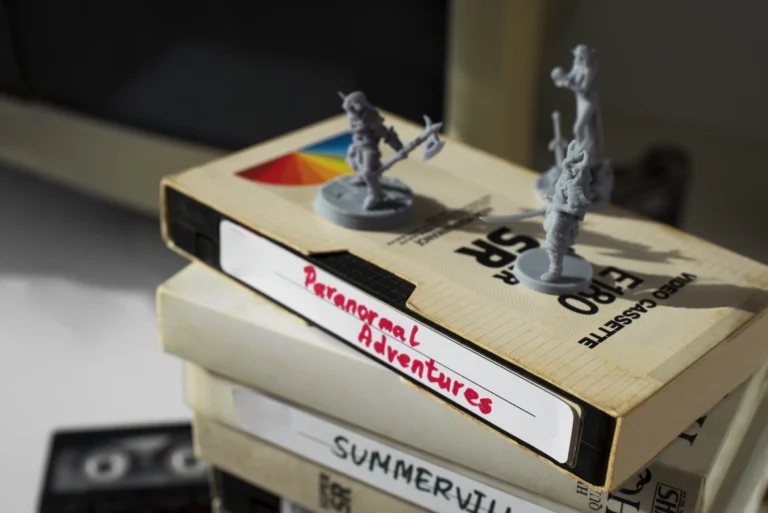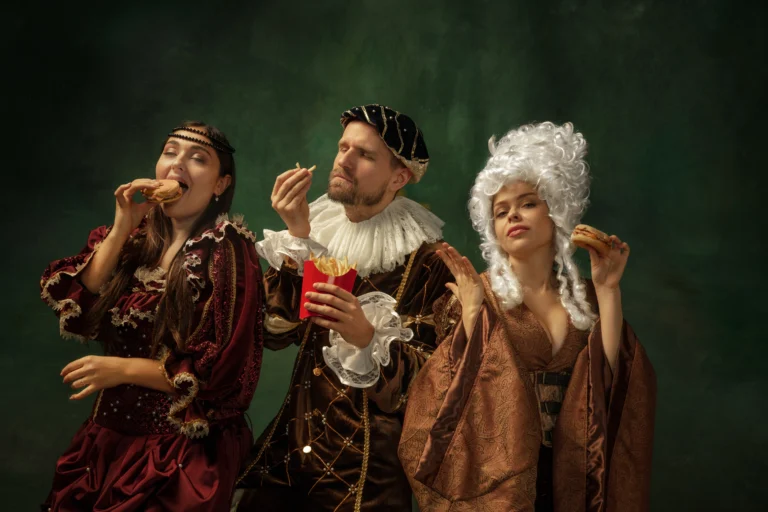German Expressionism to Today’s Horror – In the 1930s, as political unrest and rising fascism drove German filmmakers into exile, many brought their visual style to Hollywood, permanently altering the landscape of American horror.
Directors like F.W. Murnau and Fritz Lang fled Germany and began working in the U.S., embedding the DNA of German Expressionism into early studio productions. The result? A new wave of atmospheric horror that prioritized mood and shadows over gore or monsters.
🎬 One prime example is Dracula (1931), directed by Tod Browning, which borrows heavily from Nosferatu in both tone and lighting. Frankenstein (1931), shot by James Whale, used dramatic shadows and off-kilter set design—hallmarks of expressionist influence—to create visual unease.
Mood Over Mayhem: A Shift in Horror Priorities
This era cemented a key principle in horror cinema: the unseen is often more terrifying than the explicit. Shadows, silence, and psychological suggestion became tools to unsettle audiences.
Even noir cinema, which isn’t horror per se, owes its shadowy, angular visuals to expressionist roots. These elements would later resurface in horror-adjacent genres like thrillers, sci-fi, and psychological suspense.
💡 Want to see the overlap? Compare M (1931) by Fritz Lang with Hitchcock’s Shadow of a Doubt (1943). Both rely on lighting and framing to evoke paranoia, not violence.
Did Classic Horror Lose Expressionism—or Evolve It?
Rather than being replaced, expressionism evolved. Its core techniques were repurposed by American filmmakers to explore new cultural fears—shifting from the postwar trauma of Europe to the repressed anxieties of suburban America.
➡️ Can we trace today’s horror atmosphere back to 1930s Hollywood? Absolutely.
Transplanting Terror: Expressionism in Classic American Horror
From Weimar to Hollywood: A Style That Crossed Oceans
In the 1930s, as political unrest and rising fascism drove German filmmakers into exile, many brought their visual style to Hollywood, permanently altering the landscape of American horror.
Directors like F.W. Murnau and Fritz Lang fled Germany and began working in the U.S., embedding the DNA of German Expressionism into early studio productions. The result? A new wave of atmospheric horror that prioritized mood and shadows over gore or monsters.
🎬 One prime example is Dracula (1931), directed by Tod Browning, which borrows heavily from Nosferatu in both tone and lighting. Frankenstein (1931), shot by James Whale, used dramatic shadows and off-kilter set design—hallmarks of expressionist influence—to create visual unease.
Mood Over Mayhem: A Shift in Horror Priorities
This era cemented a key principle in horror cinema: the unseen is often more terrifying than the explicit. Shadows, silence, and psychological suggestion became tools to unsettle audiences.
Even noir cinema, which isn’t horror per se, owes its shadowy, angular visuals to expressionist roots. These elements would later resurface in horror-adjacent genres like thrillers, sci-fi, and psychological suspense.
💡 Want to see the overlap? Compare M (1931) by Fritz Lang with Hitchcock’s Shadow of a Doubt (1943). Both rely on lighting and framing to evoke paranoia, not violence.
Did Classic Horror Lose Expressionism—or Evolve It?
Rather than being replaced, expressionism evolved. Its core techniques were repurposed by American filmmakers to explore new cultural fears—shifting from the postwar trauma of Europe to the repressed anxieties of suburban America.
➡️ Can we trace today’s horror atmosphere back to 1930s Hollywood? Absolutely.
The Psychological Turn: Expressionism Reimagined in Modern Horror
From Fear of Monsters to Fear of the Mind
While early horror often depicted supernatural creatures, modern horror has turned inward—focusing on psychological instability, domestic trauma, and mental breakdowns. In this shift, filmmakers have found renewed relevance in the techniques of German Expressionism.
Take The Babadook (2014) by Jennifer Kent. The film’s claustrophobic interiors, dramatic lighting, and distorted shadows are direct visual callbacks to The Cabinet of Dr. Caligari. But more importantly, its horror comes not from an external monster, but from grief and psychological unraveling.
🎥 As IndieWire notes, the film’s aesthetic isn’t just decorative—it’s narrative. The visual style reflects the internal chaos of the protagonist, just like expressionist cinema intended.
A24 and the New Wave of Stylized Horror
Production companies like A24 have embraced this direction, championing directors like Robert Eggers (The Lighthouse, The Witch) and Ari Aster (Hereditary, Midsommar). These films aren’t simply scary—they’re emotionally disturbing, visually complex, and often surreal.
Eggers, in particular, has cited German Expressionism as a key influence, especially in how he uses light, sound, and framing to evoke madness and isolation. In The Lighthouse (2019), his use of black-and-white film, tight aspect ratios, and shadow-heavy compositions feels ripped from the silent era—yet it’s intensely modern in its psychological precision.
Is Psychological Horror the True Heir of Expressionism?
Modern horror films are no longer just about fear—they’re about emotional exposure, inner darkness, and subjective experience. That’s the beating heart of German Expressionism, reborn for a new generation.
➡️ Which modern horror film made you feel disturbed without showing a single drop of blood?
The Visual Language of Horror Today: Echoes of Expressionism
Sound, Color, and Design as Tools of Dread
Modern horror has evolved in terms of technology, but many of its core aesthetic principles remain deeply expressionist. What began with chiaroscuro lighting and angular sets has transformed into the cinematic language of atmosphere: sound design, saturated colors, and surreal art direction.
Films like Suspiria (2018) by Luca Guadagnino demonstrate how expressionist mood can now be conveyed through color instead of shadow. The film’s use of deep reds, muted grays, and cold blues creates unease, echoing the disorientation of The Cabinet of Dr. Caligari but through a contemporary lens.
🎨 If you’re fascinated by this approach, this article on Film School Rejects breaks down how Suspiria uses color to intensify horror.
Lighting and Framing as Psychological Commentary
Lighting is still used not just to illuminate, but to unsettle. In Jordan Peele’s Us (2019), darkness is used symbolically, representing suppressed identity and class division. The tension comes from how light reveals or conceals, just as in early expressionist works.
The use of sound has also become more intricate. Instead of exaggerated scores, modern horror often employs atmospheric noise, whispers, or minimalist droning—elements that heighten tension without overstatement, similar to how silent-era films relied on visual over auditory impact.
Horror’s Visual Future: A Genre Rooted in the Past
Despite being over a century old, the techniques born from German Expressionism continue to shape the soul of horror. Whether it’s the architectural oppression of a frame, the symbolic use of light, or the deliberate distortion of space and time, the movement’s fingerprints are everywhere.
➡️ Will future horror return to expressionism even more directly—as AI and virtual reality open new ways of visual storytelling?
Only time will tell. But one thing is certain: horror, like fear itself, always finds new forms—but never forgets its origins.
Final Thoughts
German Expressionism didn’t just influence horror—it defined it. From silent shadows to psychological spirals, its impact continues to ripple through the genre’s most powerful works. Today’s horror may use digital tools and modern themes, but it still draws from the same emotional well: a need to visualize the invisible terror within us all.
🎥 Whether you’re a filmmaker, a cinephile, or just someone who loves a good scare—understanding this lineage enriches how you see every scream, shadow, and flicker of light on screen.


